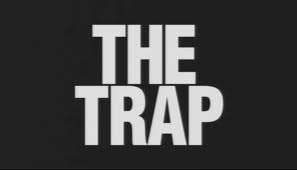by Charles Plant | Dec 10, 2012 | Leadership Development
 So you’re sitting at your desk at 7:30 some night, struggling to finish yet another project, answer one too many emails, and deal with just one more emergency when the boss drops by to hand you something more to do. Merde.
So you’re sitting at your desk at 7:30 some night, struggling to finish yet another project, answer one too many emails, and deal with just one more emergency when the boss drops by to hand you something more to do. Merde.
You have no more time. you’re scrambling to meet multiple deadlines, and your brain is stuck on overdrive. What do you do? What’s your plan?
Your only choice is to drop or squeeze. Either drop something or squeeze a few other things so you can make time for the new task.
That’s the problem most people face in the knowledge economy. In the industrial economy, it was pretty easy. Output was limited by machines. Without a whole bunch of time and investment, you just couldn’t add one more thing to do.
In the knowledge economy this problem is happening every day. You can’t measure tasks as easily. New projects are easy to invent but funds are limited.
Your ability as an employee will be judged on your ability to drop or squeeze because that’s how you’ll be able to finish each of those new tasks you’ve been given.
by Charles Plant | Dec 7, 2012 | Leadership Development
 Those are the days you need goals. In the world of motivational speakers there is a story that is often told about Goal Setting.
Those are the days you need goals. In the world of motivational speakers there is a story that is often told about Goal Setting.
According to this story, in 1953, researchers at Yale University (the story sometimes is about Harvard in 1979) surveyed the graduating class to determine how many of them had specific, written goals for the future. The results came back that only 3% of them had these goals. According to the story, 20 years later the researchers surveyed the class again and found that the 3% with goals amassed more personal wealth than the 97% who didn’t.
This is a very nice story of course, compelling, illustrative and inspirational but a number of people have followed up on it and unfortunately it is entirely fabricated. Both Yale University and the Secretary of the class of 1953 at Yale confirm that they have never heard of a study of the sort.
Whether or not the story is real, the point of it is, if you don’t know where you’re going, any road will take you there.
by Charles Plant | Dec 6, 2012 | Leadership Development
 If you don’t have goals for yourself, someone else will make some up for you. That’s the trap.
If you don’t have goals for yourself, someone else will make some up for you. That’s the trap.
Whether it’s your parents, your spouse or your boss, others around you have goals and their best way of accomplishing these goals is to co-opt you into fulfilling them. Without your own goals you’ll be forever fulfilling everyone else’s.
The trap comes in many forms. It comes in getting too many emails, having too many meetings, being saddled with too many projects. If you let yourself, you’ll become overwhelmed by everyone else’s goals.
To get out of the trap, you need to set some goals for yourself and work single-mindedly towards accomplishing them.
by Charles Plant | Dec 4, 2012 | Leaders, Leadership Development
Well, December is upon us and I’m trying to figure out some goals for next year. No doubt you’re trying to do the same. To give you some inspiration I have included a TED Talk that I thought might inspire you. If you get this blog in an email, click on the blog link to see the video.
by Charles Plant | Nov 29, 2012 | Leadership Development, Research
 I’ve been playing with metrics for the last week, trying to find ways to measure the link between leadership and growth in a company. This article by Bain and Company shows one clear part of the link and demonstrates a powerful metric to be used in measuring client engagement.
I’ve been playing with metrics for the last week, trying to find ways to measure the link between leadership and growth in a company. This article by Bain and Company shows one clear part of the link and demonstrates a powerful metric to be used in measuring client engagement.
The first part of the success formula is good leadership. Good employee leadership at a company creates strong employee engagement. I’ve harped on that before so won’t go into how this works. What is important is what happens as a result of employee engagement.
According to the article: “Frontline employees are central to every high-performing go-to-market system, the linchpin that makes it all work.In our survey, frontline engagement was the No. 1 factor separating leaders from laggards— which means, in effect, that if you don’t get the frontline part right, you are failing to get the system right. As it turns out, nearly every one of the go-to-market leaders we studied engages the front line as the embodiment of its go-to-market system.”
That is the second part of the formula. Engaged frontline employees create customer engagement.
The study points out further that: “Just 9 percent of the 2300 companies in their study companies actually averaged annual revenue and profit growth of at least 5.5 percent over the 11-year period from 2000 to 2010.Nearly all of them have a different relationship with their customers. Far more than other companies, their customers are loyal, passionate advocates—the kind of buyer who loves doing business with a company. Far fewer customers are dissatisfied. The average Net Promoter® score of the growers is 30, compared with just 13 for other companies. (A metric widely used by customer-focused companies, the Net Promoter score, or NPS®, is based on the question, On a zero-to-10 scale, how likely are you to recommend the company to a colleague or friend? A company’s NPS is the percentage of promoters— those responding with scores of 9 or 10—minus the percentage of detractors—those giving scores of zero to 6.)”
So that finally, Engaged customers create growth and profit.
 So you’re sitting at your desk at 7:30 some night, struggling to finish yet another project, answer one too many emails, and deal with just one more emergency when the boss drops by to hand you something more to do. Merde.
So you’re sitting at your desk at 7:30 some night, struggling to finish yet another project, answer one too many emails, and deal with just one more emergency when the boss drops by to hand you something more to do. Merde.


